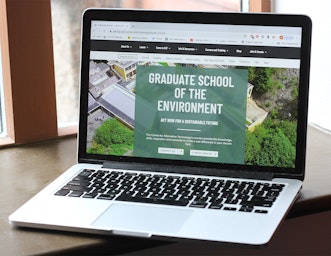
In the first of a new series looking at themes and topics explored by students on CAT Masters degrees, Frances Hill looks at thermal comfort – what it means, why it matters and some of the main teaching methods used in our Graduate School of the Environment courses.
Second only to having a roof to keep the rain off, what we want most from our homes and places of work is to be thermally comfortable – warm enough, but not too hot. This involves using energy, of one sort or another, to maintain a comfortable temperature range.
Teaching about thermal comfort therefore underpins our teaching of the MSc module ‘Energy Flows in Buildings’ (aka ‘Buildings and People’), which also looks at heat transfers through the building fabric and by air movement, passive design to reduce energy demand, and the impacts of an energy efficient home on wellbeing, and therefore on society and the wider economy. Occupant behaviour is important too and interacts with thermal comfort in some important ways.
Why is thermal comfort important?
The use of energy and building materials both impact our wider environment – in particular through emissions from the creation and transport of materials, and through use of energy for heating and cooling, which of course contributes to increasing global temperatures and climate change.
As many of us know from our own experiences of summer heatwaves and difficult-to-heat homes, our thermal comfort can also make a lot of difference to our physical and mental wellbeing. This doesn’t only impact us as individuals and families, but can also lead to social costs. For example, sickness due to cold homes increases absenteeism from schools and employment and raises the costs of healthcare.
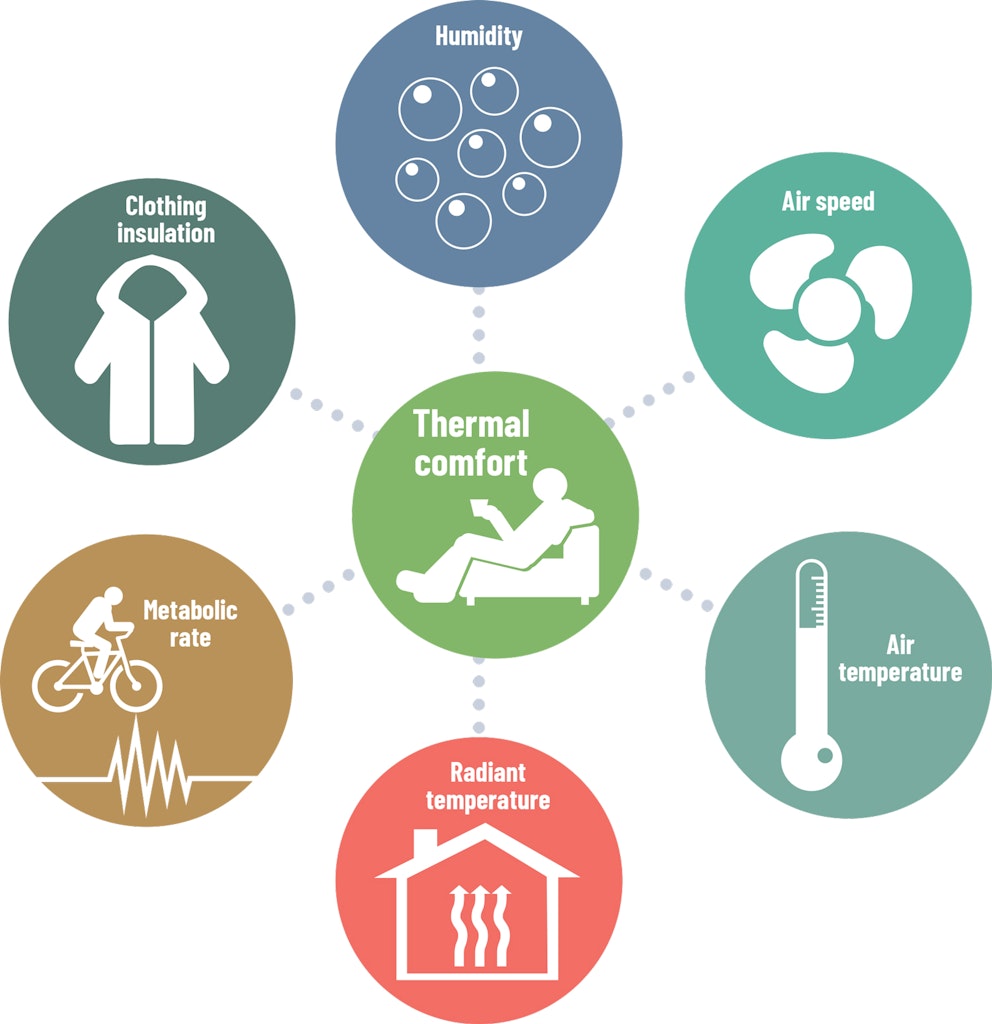
What are the key aspects to consider?
To a certain extent, thermal comfort can be predicted via a calculation which factors in temperature, humidity and speed of air movement. However, our comfort range depends on many other factors, including physiological factors such as age, psychological factors such as our emotional state, and contextual factors like light levels.
Our students begin by looking at perception of thermal comfort, on a scale from too cold, through “neutral” (= comfortable), to too hot, and then explore what might be impacting this perception.
We look at adaptive behaviours and their potential impact. For example, how we can adapt by changing clothing, position or activity, or by changing the conditions of our surroundings. The latter may involve the use of energy, both in the materials used for building/improving the home or workplace and in heating or cooling it.
We also look at climate impacts on our thermal comfort. Key factors are temperature and humidity. Through the experience of a sauna, we compare the impacts of a hot humid climate (typically a temperature of 28°C, and 85% relative humidity) and hot arid (perhaps 36°C and 40% relative humidity).
We then look at passive design strategies that can achieve improved thermal comfort in different climatic conditions, such as extending roofs to shade south-facing windows to reduce solar gain, or adding additional insulation, draughtproofing or thermal mass, and look at calculations that can help quantify the impact of these measures.
When we consider the increasing demand for cooling in buildings, we identify and quantify heat sources in buildings – including anthropogenic (from ourselves) and the electrical devices we use, as well as solar gain (heat from the sun through windows).
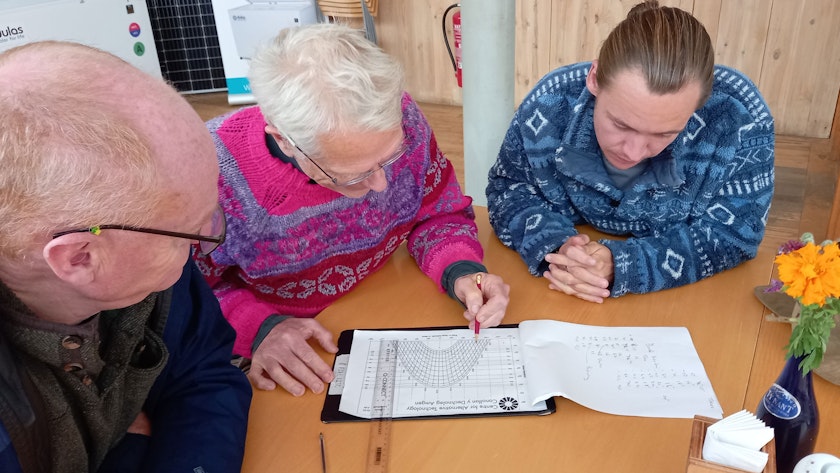
What are the main teaching methods?
CAT’s whole approach to learning is to give students a range of different ways to explore topics and develop a deep understanding. As with other modules, we have some highly practical sessions alongside in-depth lectures, discussion seminars and numerical workshops.
To really get to grips with the concept of thermal comfort, and factors that affect this, we have students note their “comfort scores” during a couple of lecture sessions, and at the same time we collect data on the temperatures of air, walls, floors, etc, in order to explore how well the scores match the calculation routes.
We also offer students experience in a sauna, where we monitor homeostatic responses (physical responses like sweating or shivering) and core temperature variation – and then again in response to subsequent cooling (we run a “virtual sauna” by distance learning too).
In guided learning in small groups, our students look at a range of topics relating to thermal comfort, such as sunpaths, use of monitoring equipment, choice of building/insulation materials, calculating U-values (how much heat is transferred through walls, etc) and potential for interstitial condensation (condensation inside walls, floors or roofs).
Drawing on knowledge from these workshops and lectures as well as additional independent reading, our students then work on independent assignments that explore building design/ improvement strategies that support enhanced thermal comfort.
How do students use this learning?
Students and graduates have applied knowledge of thermal comfort in a variety of ways. For example, one of our graduates looked at understanding occupant needs and perceptions of thermal comfort in a social housing project in Surrey, working with the designers and occupants to improve both thermal comfort (and wellbeing) and energy efficiency.
Others have worked on projects tackling fuel poverty, providing information, advice and practical measures to help improve thermal comfort in affordable ways. Some have gone on to further research and teaching positions or are practising architects.
By understanding the factors that impact thermal comfort and how occupant wellbeing can be optimised in ways that also lower energy use and emissions, we can create healthier, happier, cheaper-to-run homes and workplaces whilst taking action on the climate emergency.
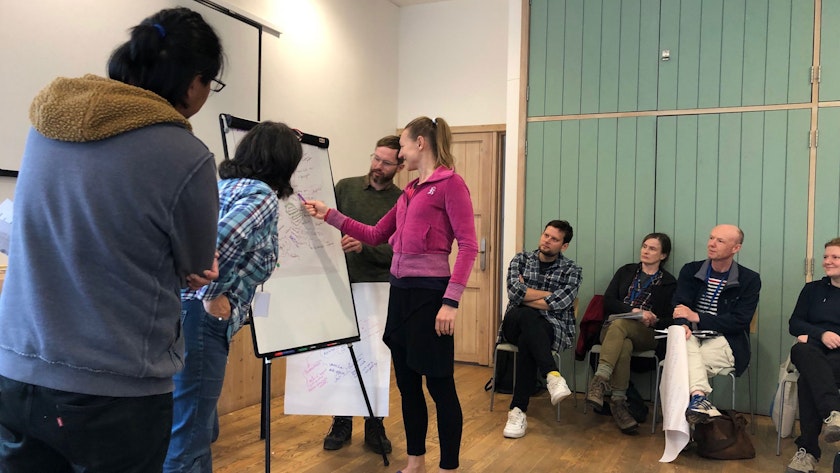
Shady spaces and cosy homes
Building design and furnishings can help to reduce the amount of energy used to keep homes warm in winter and cool in summer, reducing greenhouse gas emissions at the same time as adapting to the changing UK climate. There are many inter-related factors to consider, but a few key areas are outlined below.
- Warm rugs on the floor help keep feet warm, improve thermal comfort and reduce heating demand. Warm clothes help too!
- Good detailing around windows and doors will help avoid heat being lost through draughts – but good ventilation is needed to prevent condensation.
- Insulation doesn’t just keep the heat in in winter, it also helps keep the heat out in summer. But insulation can also add to overheating due to “internal gains” from occupants and their activities, so other measures might still be needed to keep cool in a heatwave.
- Air conditioning is very power hungry – ceiling or desk fans that create air movement, or exhaust fans that remove heated air are lower energy options.
- Incorporating materials with high thermal mass, which absorb heat during the day and slowly release it at night (for example rammed earth or natural stone) can help to regulate indoor air temperature.
- The orientation of a building can have an impact – glazing on south-facing facades can increase solar gain, for example, which may reduce heating demand in winter, but can cause overheating in summer.
- Roofs with larger overhangs on the south side can provide shading for windows to help keep homes cool.
About the author
Frances is Programme Leader on CAT’s Sustainability in Energy Provision and Demand Management MSc. She has a background in physics and a PhD in Environmental Engineering. Her teaching focuses on heat transfers in buildings, heating, cooling and ventilation.
- Graduate School
- News Feed
Related Topics
Related Pages
Related events


On-site Open Day: MSc & MRes Courses
17th May 2024
Graduate School Postgraduate Funding Webinar
20th May 2024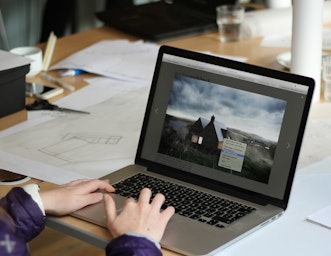
Virtual Open Day: MArch Sustainable Architecture Part 2
27th May 2024GRADUATE SCHOOL OF THE ENVIRONMENT
ACT NOW FOR A SUSTAINABLE FUTURE
Learn more about our exciting postgraduate courses and sign up for our emails to stay up-to-date on all the latest.

